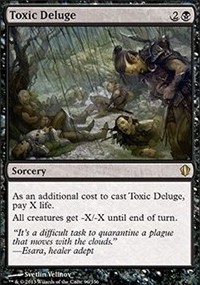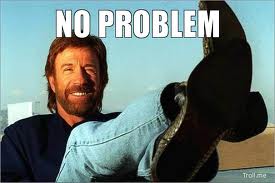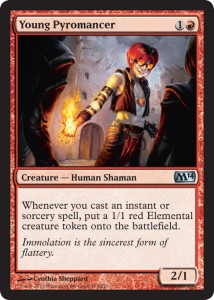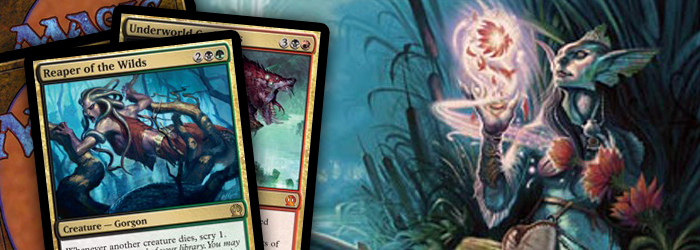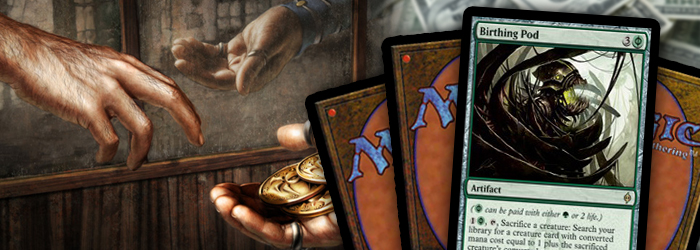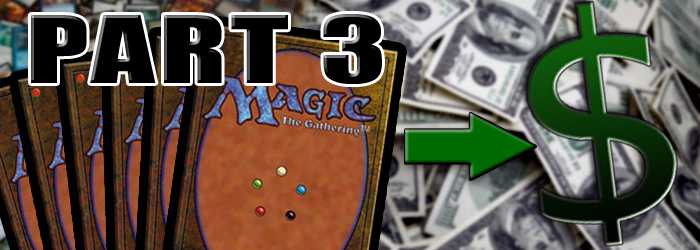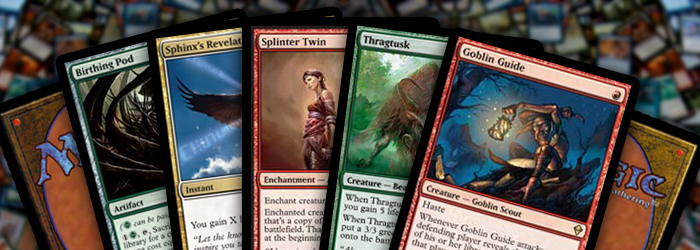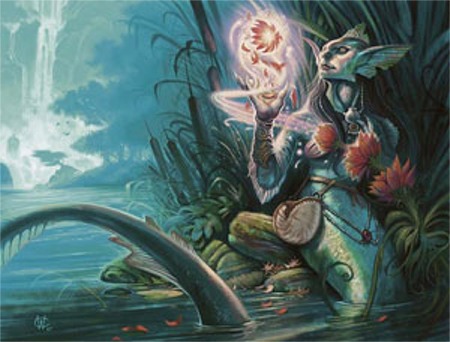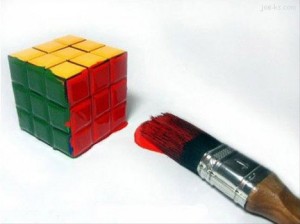Welcome back, brewers. Surprise, surprise, today I’m going to talk about GW Scion. It’s been a while since I last wrote about it. In fact, it was before Born of the Gods was even released. Now that the new set has been out for a while and I’ve had a chance to play with it, I feel comfortable discussing this deck again. And guess what? It’s still my favorite deck in the format.
Born of the Gods shook things up…somewhat. Mono-Black Devotion is still the most popular deck. There’s still a UW/x control deck. Green/Red monsters has gained popularity. There’s still a Mono-Blue Devotion deck, but now it’s splashing white. I’ve found that the GW deck can hold its own against a lot of the field.
With this article, I want to give a complete overview of the deck moving forward. I’ve noticed that there are not a lot of people playing the GW archetype, so someone’s got to inform you all. I want to go over all the potential new cards from BNG that could possibly be added to the deck. Lets take a look at each popular matchup and what the GW player needs to do to win. I’ll go through the latest version of the deck I’ve been playing (and still winning with). Seriously, I don’t know why more people aren’t playing it. First up, take a look at the latest version I would play if I were playing in a tournament tomorrow.
[deck title=GW Scion]
[Creatures]
*4 Experiment One
*4 Voice of Resurgence
*2 Fleecemane Lion
*1 Scavenging Ooze
*2 Boon Satyr
*2 Brimaz, King of Oreskos
*3 Loxodon Smiter
*2 Polukranos, World Eater
*3 Scion of Vitu-Ghazi
[/creatures]
[Spells]
*4 Advent of the Wurm
*3 Call of the Conclave
*4 Selesnya Charm
*2 Ajani, Caller of the Pride
[/Spells]
[Lands]
*4 Temple Garden
*4 Temple of Plenty
*7 Plains
*9 Forest
[/Lands]
[Sideboard]
*2 Banisher Priest
*2 Gods Willing
*2 Mistcutter Hydra
*2 Unflinching Courage
*2 Glare of Heresy
*2 Rootborn Defenses
*1 Skylasher
*2 Druid’s Deliverance
[/Sideboard]
[/deck]
Born of the Gods in GW Scion
First you’ll notice that there are not a lot of cards from the new set. Why, you ask? I’ll tell you. I went through Gatherer to review every green or white card from the new set, and anything close enough to Constructed, we will discuss. Let’s go.
[card]Brimaz, King of Oreskos[/card]
The king is here and he’s…eh. I like Brimaz, but he’s really not the powerhouse I thought he would be. He’s basically a [card]Loxodon Smiter[/card] most of the time. He is a huge lightning rod, which can be good or bad. The fact that he has vigilance is not as relevant as you’d think, because the number of aggressive decks has gone down. He does have one really cool application, and that it keeping a [card]Desecration Demon[/card] tapped, which has come up. To be honest, Brimaz is more of a problem for GW to beat than a tool it can use. I don’t like to play against it and it seems really good coming from the BW deck or added to UW.
[card]Courser of Kruphix[/card]
Not exactly what the GW deck want to do. The deck is already full of three-drops and you really need to attack hard and fast. The deck really doesn’t have anything to do with extra mana, so this one can stay in G/R monsters.
I did have an idea of using this card with [card]Scavenging Ooze[/card] and [card]Soldier of Pantheon[/card] to trigger [card]Archangel of Thune[/card], but it probably wouldn’t be good unless you draw the angel.
[card]Eidolon of Countless Battles[/card]
To be honest, this is not a card I have tested yet. Again, the problem lies with the overabundance of three-drops. This card seems good though, as it will help protect against [card]Supreme Verdict[/card]. Its bestow cost is very aggressively costed, but I worry about drawing it and it being only a 1/1 when it could be a cat king.
[card]Fated Intervention[/card]
This card seems to slot right into the deck, but two 3/3s is just not enough for me. The fact that it is good against Verdict is nice, but in a format of [card]Bile Blight[/card], this cards seems flat. I’m still a fan of the Scion.
[card]Karametra, God of Harvests[/card]
Evaluating this card is easy, because it is literally poop soup. Because the four-mana slots are so important, I remember thinking that the GW god would need to be costed at three mana in order for me to even think about it. You could even have tried Trostani to turn it on in a token deck. At five, it just sucks.
[card]Revoke Existence[/card] / [card]Unravel the Aether[/card]
I started off with two copies of this effect in the sideboard, but never boarded them in. The idea was sound, as every deck has something you can hit and both hit the gods, but each deck only has one or two targets. I rarely wanted to dilute my deck to try to answer a card they may not even draw. In the end, I ended up with zero.
[card]Spirit of the Labyrinth[/card]
A solid two-drop, but not exactly what we are looking for. We already have access to two-mana 3/3s. The effect, while powerful, will rarely come up. UW will have an answer to this and then cast its Revelation. I could see playing some of these if card draw got more popular, but for now, I’d rather play with centaurs.
Matchups Explained
As you can see, GW didn’t really get that much help from BNG. What did happen though are slight shifts to the metagame. Lets take a look at each match up that you will face.
Mono-Black Devotion
I’ve always felt that this is a favorable matchup. You want to be fast and play creatures quickly, forcing them to respond. Ideally, you can curve out with [card]Experiment One[/card]. Their [card]Thoughtseize[/card] is usually strong, as it will disrupt you from curving out. Their removal is also usually strong because the fewer creatures in play, the stronger their [card]Desecration Demon[/card] gets. Even the dreaded play of turn-two [card]Pack Rat[/card] can be beaten fairly easily with a fast curve. Always attack into the [card]Pack Rat[/card]. If they ever block your creatures, it’s usually good for you because it will shrink the rat army. Basically none of the creatures in the black deck are good against us. If they are playing white, [card]Blood Baron of Vizkopa[/card] is a problem, but can be beaten.
I generally board out some number of Polukranos, [card]Boon Satyr[/card], [card]Loxodon Smiter[/card], and [card]Call of the Conclave[/card] for [card]Banisher Priest[/card] and [card]Gods Willing[/card]. The former are all just dumb creatures that die to removal, the latter will remove [card]Pack Rat[/card]s and protect against removal. Make sure you don’t dilute your deck too much, because you need to keep a curve and be aggressive. They will, more than likely, bring in more removal and [card]Lifebane Zombie[/card]. The zombie is very good at two-for-ones but by itself is not enough.
UW / UWb / UWg Control
Next up, let’s take a look at the most popular control deck in the format and its many variants. Overall, I would like to play against the UW version the most, followed by UWb then UWg. UW really doesn’t have good spot removal and its best weapon, [card]Supreme Verdict[/card], can be played around. UWb has some good early answers to our creatures, but not enough. I’m not so sure why the addition of green causes so many problems. [card]Kiora, the Crashing Wave[/card] feels like a house—always negating our best creature is difficult to play around. When Kiora is teamed with [card]Jace, Architect of Thought[/card] or [card]Elspeth, Sun’s Champion[/card], it is almost lights out for the GW mage. I also noticed that the decks that add green also generally play [card]Ratchet Bomb[/card], which is very difficult to play around. You basically need to keep deploying creatures and hope they don’t have it. But guess what? They always have it.
To win against the control deck, you need to make them keep reacting to you. Play aggressively, but make sure to play around a sweeper effect. When you force them to cast their [card]Supreme Verdict[/card] early or spend a turn trying to find an answer, you will usually win. I like to board out the same types of creatures as against Mono-Black Devotion, such as Polukranos, [card]Loxodon Smiter[/card] and sometimes [card]Selensya Charm[/card]. The flash creatures are very good here, but a 2/2 is usually not enough. I board in [card]Rootborn Defenses[/card] and [card]Glare of Heresy[/card] to protect my creatures and kill their [card]Detention Sphere[/card]s or Elspeth.
Although it may seem tempting to try to kill your opponent quickly, I’ve found that when there is a planeswalker on the other side of the table, you should always try to kill it. Don’t let your opponent get another activation off that Jace—he may find an answer. Another trick is when your opponent pluses Kiora on a creature you have, attack with it anyway to help play around [card]Celestial Flare[/card].
GR Monsters
The Green-Red Monsters matchup can go one of two ways. The first is you play a lot of high power guys and overwhelm them. The second is that they start to gain lots of card advantage off of [card]Courser of Kruphix[/card] and Domri and slowly kill you with giant guys. Overall, I would say that this matchup is fairly even depending on what they draw. You still don’t want to play against [card]Stormbreath Dragon[/card], because you have no way to interact with it besides racing. But every other creature they play is either too small to matter (i.e. mana dork) or large but removable with [card]Selesnya Charm[/card]. Play around [card]Mizzium Mortars[/card], as that card can really turn a game from absolute winning to losing. All the guys with five toughness are crucial in this matchup because you don’t have to worry about their sweeper.
Exception! The Jund version of this deck is a nightmare to play against. They have all the same threats that you are worried about plus the spot removal that can give them the time to set everything up. I’ve played against this matchup a few times with mostly unfavorable results. The problem with sideboarding against this deck is that it has so many angles. Do you board a [card]Plummet[/card] to take care of the dragon? Do you board a [card]Pithing Needle[/card] to take care of planeswalkers? How about [card]Gods Willing[/card] to dodge removal? [card]Last Breath[/card] to take out early blockers? There is really not a good path to take other than to be fast and resilient. Avoid Jund Monsters if you can.
Mono-Blue Devotion
Azorius is the new Mono-Blue Devotion in town. GW players always feared the mono-blue menace, but I have found the matchup to be not so bad. They basically have two cards that you care about: [card]Master of Waves[/card] and [card]Thassa, God of the Sea[/card]. You have answers to both of those cards in the main. Polukranos can scare away a master even before it is cast. Thassa is stopped by [card]Selensya Charm[/card]. Both are answered by [card]Banisher Priest[/card]. Adding the white may make them better against other decks, but I have been winning a lot more against the blue menace ever since white was added. Maybe they reduced their threats and slowed down enough. I’m not sure.
[card]Cyclonic Rift[/card] is their best card and gives them inevitability. Other than that, board out some of your slower cards and bring in your pro-blue guys. Make them waste their Rift early and dodge their two good spells—you’ll be okay.
Boros Burn
The new kid on the block. I’ve talked to people who play this deck and they said that they would like to play against GW. I have found that the matchup from GW side is fine. As with the GR deck, this match can usually go one of two ways. You play very big guys very quickly and they lose. Or they get down an early [card]Satyr Firedancer[/card] and burn you to the face, killing all your guys in the process. If they don’t get down a turn-two Satyr, you’re probably fine, as you can race their burn spells. If they do get it, you better hope the rest of their hand is lands. The rest of their creatures are garbage that you completely outclass.
I usually just board out Scion for +2/+2 and lifelink, but watch out as they also play [card]Chained to the Rocks[/card]. Be fast and kill them quickly, but watch your life total—they can deal an absurd amount of damage from nowhere.
Those are the big five and you have reasonable game against everything. I would not want to play against UWg or Jund Monsters, but fortunately those decks are not super popular right now. Mono-Black Devotion seems favorable, as it has always been.
Ch-Ch-Ch-Changes
Now that you know the decks you will play against, lets take a closer look at some of the changes to the specific cards and numbers that we are now using. I have been playing this version with some minor tweaking for the last few weeks and have had some good results, including quite a few more QPs than normal.
4 [card]Experiment One[/card]
I often think that I should change this card with [card]Elvish Mystic[/card] to give the deck some explosive power, but I worry that it will die to [card]Supreme Verdict[/card] without much benefit. There are some games where you start with one or two of these and they just grow so large your opponent can’t deal with it.
4 [card]Voice of Resurgence[/card]
This card is still good. Being able to make your opponent play on his own turn is huge. Watch out for some lists that play [card]Last Breath[/card] or [card]Chained to the Rocks[/card]. Those are cheap ways to remove Voice without giving you a token, and believe me: you want the token.
3 [card]Call of the Conclave[/card]
I switched from [card]Fleecemane Lion[/card] to a few [card]Call of the Conclave[/card] as a concession to [card]Bile Blight[/card]. These are usually the same thing, but the fact that the centaur is only green can help against [card]Blood Baron of Vizkopa[/card] or [card]Soldier of the Pantheon[/card]. You are also playing more populate cards, so having another token helps.
2 [card]Fleecemane Lion[/card]
Fleecemane is still good. When it is monstrous, it can’t be stopped by almost anything. Monstrous [card]Fleecemane Lion[/card] is often the best target for [card]Unflinching Courage[/card].
1 [card]Scavenging Ooze[/card]
This spot is flexible. I’m not in love with [card]Scavenging Ooze[/card], but it is good to play late in a game where a lot of creatures have died. That Ooze will get large! I have seen a few graveyard-based decks online, which this certainly helps against. There are also some burn decks, so if they burn out your creatures early, this card will help you gain some much-needed life.
4 [card]Selesnya Charm[/card]
The card is primarily to remove big threats, especially [card]Desecration Demon[/card] or all the big guys in the GR Monsters deck. The other modes are used to push through damage quickly. The knight having vigilance does come up every once in a while, so don’t forget about it. The knight token is also a good target for our next card…
2 [card]Ajani, Caller of the Pride[/card]
Ajani is great. It forces your opponent to deal with it while simultaneously pumping up your guys. It can be used to deal a bunch of surprise damage, especially in conjunction with end-of-turn [card]Advent of the Wurm[/card]. Two feels like the right number because you rarely want to draw more than one. I’m often in a position that I can’t win and my only out is Ajani.
2 [card]Boon Satyr[/card]
I dropped the number of [card]Boon Satyr[/card]s from my previous list from four to two. The card is still very good, especially against UW-based control decks. But because many people are moving more toward creature decks, the two toughness on [card]Boon Satyr[/card] can be a liability.
2 [card]Brimaz, King of Oreskos[/card]
All right, a new card. I discussed Brimaz in detail above. I only play with two so I don’t draw too many. The GW deck doesn’t have a lot of ways to generate card advantage so having too many of these stuck in your hand could result in a loss.
3 [card]Loxodon Smiter[/card]
This guy packs quite the punch for a three-drop. The three-drop spot is fairly deep so we only play three.
4 [card]Advent of the Wurm[/card]
In my opinion, the reason to play this deck. Making your opponent worry about your four untapped mana is a great feeling. Great with populate, but also great all the way around.
2 [card]Polukranos, World Eater[/card]
A big threat, but also great against [card]Master of Waves[/card].
3 [card]Scion of Vitu-Ghazi[/card]
I went into detail on my opinion of this card in previous articles. All of my previous statements still hold true. I don’t know why people aren’t playing this card.
4 [card]Temple of Plenty[/card]
I never would have guessed that the GW deck would want a scry land so bad, but I was wrong. The scry land is excellent here. Not only does the deck really need to hit green and white mana, it doesn’t want to risk being flooded out. The deck also doesn’t want to draw small creatures late, like [card]Experiment One[/card]. [card]Temple of Plenty[/card] is just what the doctor ordered.
4 [card]Temple Garden[/card]
7 [card]Plains[/card]
9 [card]Forest[/card]
You basically need both colors as soon as possible. I play an extra Forest to be able to cast my four-drops on turn four as reliably as possible.
I Hope You Learned Something
Well, there you go. Now you too can be a champion for Selesnya. Keep in mind this primer is just a guideline. Feel free to sideboard based on what your opponent is playing. I constantly change the maindeck around to try new things and depending on what decks I expect. Remember, part of the appeal to play a deck that is off of everyone’s radar is they don’t normally know how to play against you. If you have any questions feel free to list them in the comments. Thanks for reading.

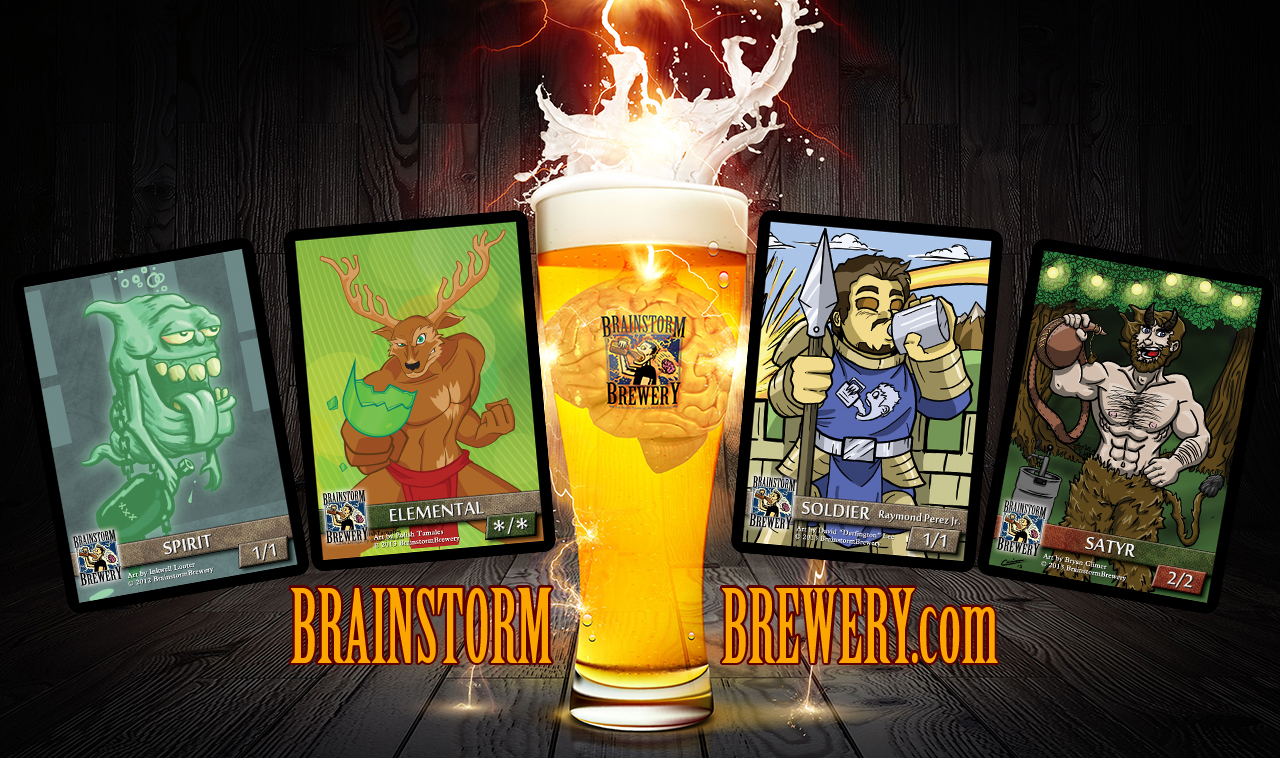









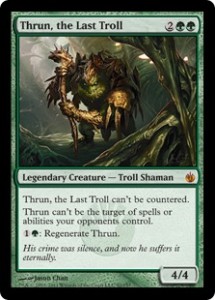
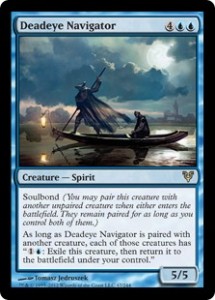


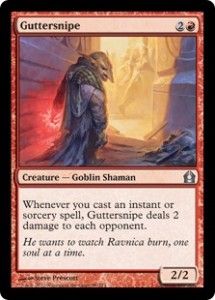



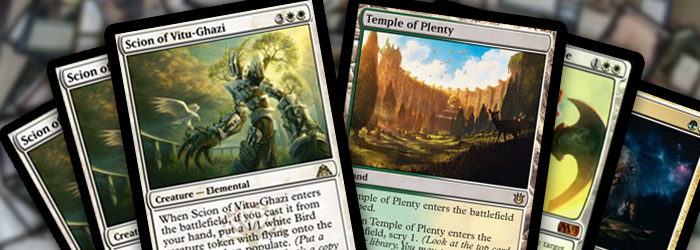




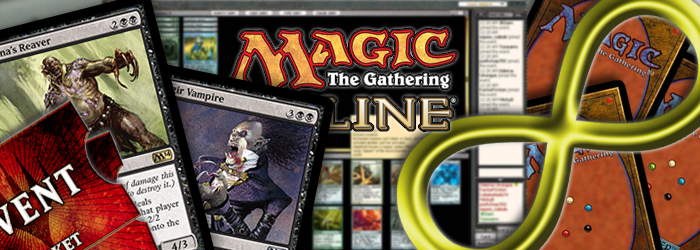


 [card]
[card]
